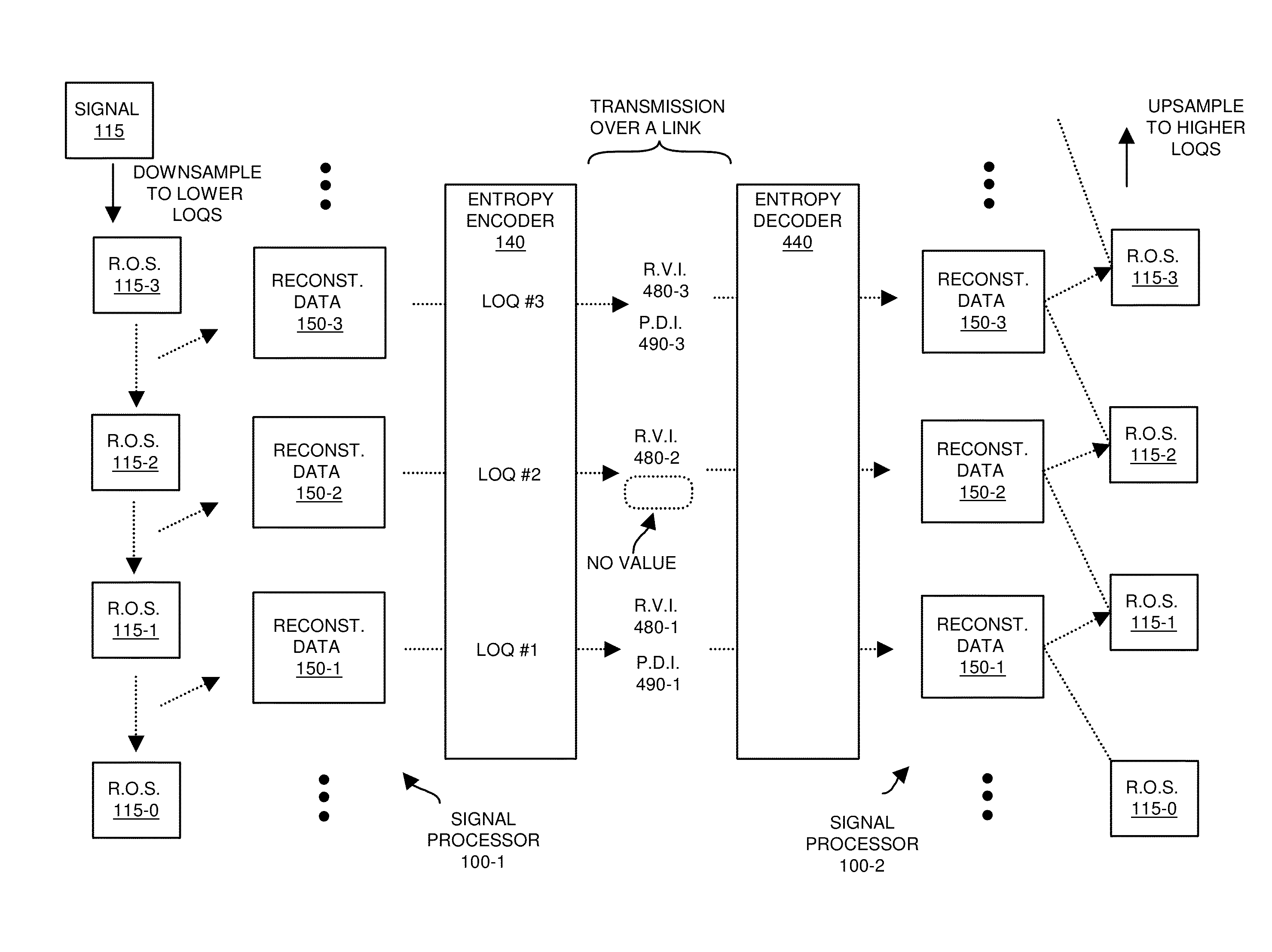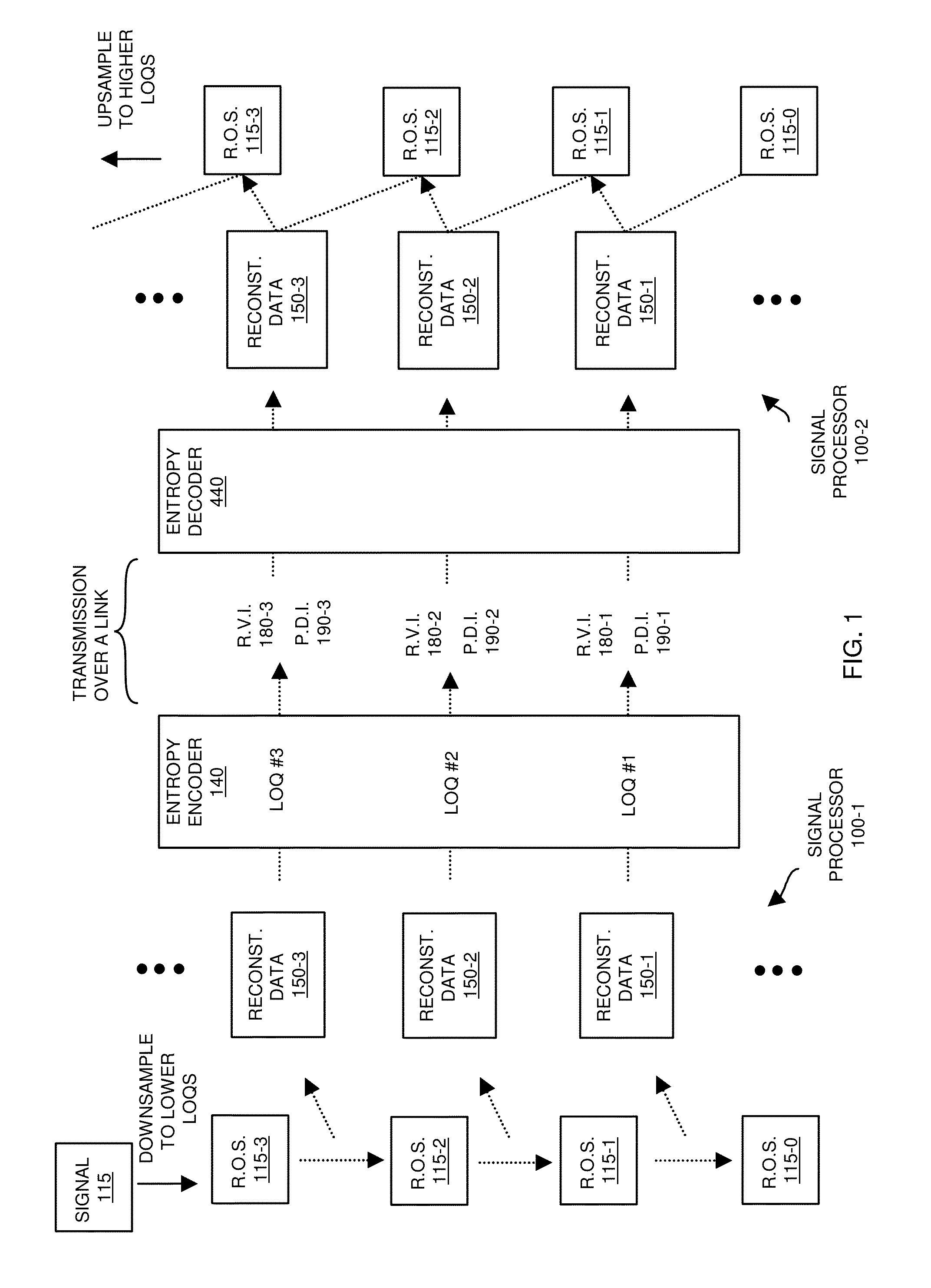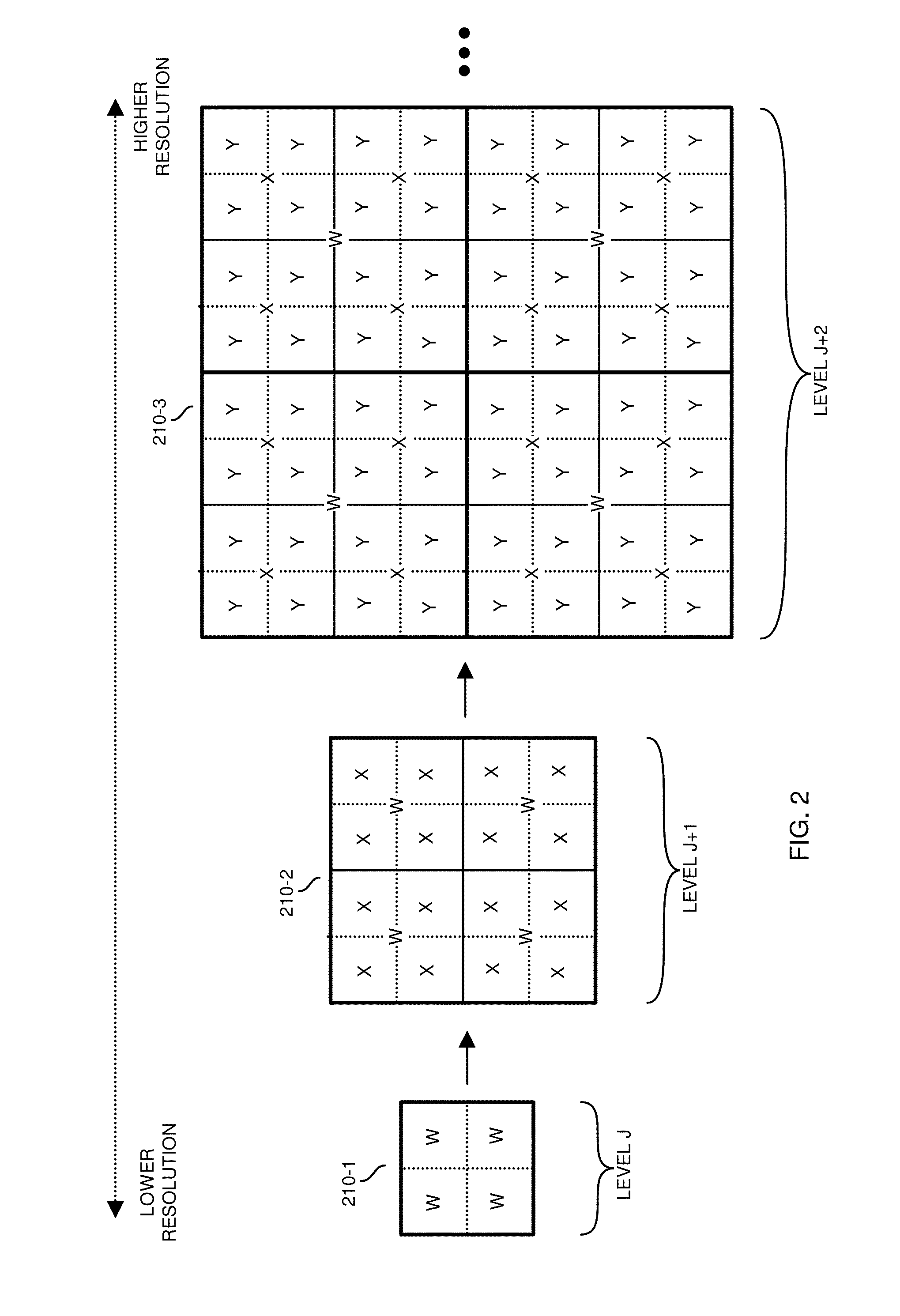Signal processing and inheritance in a tiered signal quality hierarchy
a signal quality and signal processing technology, applied in the field of signal processing and inheritance in a tiered signal quality hierarchy, can solve the problems of large portion of available processing power going unused, structural non-parallax of traditional mpeg (moving picture expert group) family codecs, and unsuitable for parallel cpus applications, so as to reduce the entropy of residuals, increase the probability of zero symbols, and calculate how many bits
- Summary
- Abstract
- Description
- Claims
- Application Information
AI Technical Summary
Benefits of technology
Problems solved by technology
Method used
Image
Examples
Embodiment Construction
[0058]FIG. 1 is an example diagram illustrating processing of reconstruction data according to embodiments herein.
[0059]As shown, a signal processor 100-1 downsamples a signal 115 into different renditions at lower levels of quality. In general, downsampling the signal 115 can include producing a rendition of the signal at each of different levels of quality and generating reconstruction data specifying how to convert a given rendition of the signal at a first level of quality into a rendition of the signal at a next higher level of quality in the hierarchy.
[0060]Note that values associated with the rendition of signal 115 and corresponding rendition of signal at lower levels of quality can represent any suitable type of data information. By way of non-limiting examples, the signal 115 can be image data, a frame or field of a video, a volumetric medical image, a motion map, etc., indicating settings (e.g., color components, motion vectors expressed in rectangular or polar coordinate...
PUM
 Login to View More
Login to View More Abstract
Description
Claims
Application Information
 Login to View More
Login to View More - R&D
- Intellectual Property
- Life Sciences
- Materials
- Tech Scout
- Unparalleled Data Quality
- Higher Quality Content
- 60% Fewer Hallucinations
Browse by: Latest US Patents, China's latest patents, Technical Efficacy Thesaurus, Application Domain, Technology Topic, Popular Technical Reports.
© 2025 PatSnap. All rights reserved.Legal|Privacy policy|Modern Slavery Act Transparency Statement|Sitemap|About US| Contact US: help@patsnap.com



